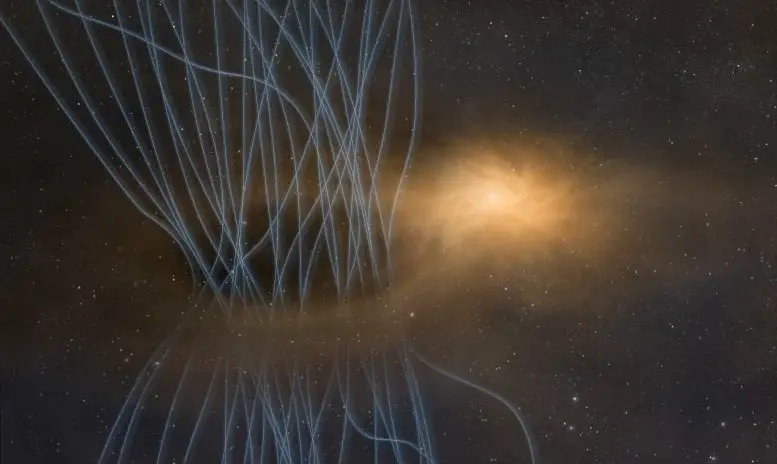Researchers from Kyushu University have published a new perspective on the development of child stars. Using the ALMA radio telescope in Chile, the team discovered that the protostellar disk surrounding the newborn star ejects balls of dust, gas, and electromagnetic energy in its early stages. These eruptions, which the researchers call “sneezes,” release magnetic flux from the protostellar disk and may play a critical role in star formation. Their findings were published here: Astrophysics Journal.
All stars, including our Sun, are formed from large concentrations of gas and dust called stellar nurseries, which then condense to form the stellar core, or baby star. During this process, the gas and dust form a ring around the baby star called the protostellar disk.
“These structures are constantly permeated by magnetic fields, which in turn bring magnetic flux. However, if all this magnetic flux had persisted during the evolution of the star, it would have produced magnetic fields much stronger than those observed in any known protostar,” explains Kazuki Tokuda of the School of Science at Kyushu University and first author of the study.
Therefore, the researchers hypothesized that there was a mechanism that would remove this magnetic flux during the evolution of the star. The prevailing view was that the magnetic field gradually weakened over time as the cloud was pulled into the star’s core.
Magnetic flux displacement mechanisms
To understand the essence of this mysterious phenomenon, the team targeted MC 27, a stellar nursery located about 450 light-years from Earth. The observations were collected using the ALMA array, a collection of 66 high-sensitivity radio telescopes built 5,000 meters above sea level in northern Chile.
“After analyzing our data, we discovered something quite unexpected. There were these ‘spiky’ structures extending several astronomical units from the protostellar disk. As we went deeper, we saw that these were bursts of magnetic flux, dust, and gas being ejected,” Tokuda continues.
“When instabilities in the magnetic field react with different gas densities in the protostellar disk, resulting in the magnetic flux being thrown outward, this phenomenon is called an ‘exchange instability.’ We called it the ‘sneeze’ of the baby star because it reminded us of when we were expelling dust and air at high speeds.”
Additionally, other spikes were observed several thousand AU away from the protostellar disk, which the team suggests points to other “sneezes” in the past.
The team expects their discoveries to advance our understanding of the complex processes that shape the universe, which continue to intrigue both the astronomical community and the public.
“Similar spiky structures have been observed in other young stars, and this is becoming an increasingly common astronomical discovery,” Tokuda concludes. “By studying the conditions that lead to these ‘sneezes,’ we hope to expand our understanding of how stars and planets form.”













